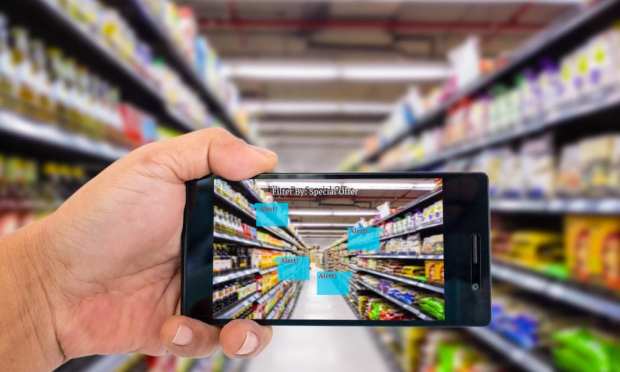Retailers Look To Augmented Reality To Lure Local Shoppers

Retail is getting more visual, and that stands to be the case for locally-focused merchants as they compete for attention and consumer dollars with the likes of Amazon and Walmart. Indeed, augmented reality is among the tools that local retailers look ready to adopt for further use.
According to one recent report, augmented reality, or AR, “has lots of implications for local commerce. Despite the outsized attention that eCommerce gets, 90+ percent of retail spending happens locally in physical stores. AR can fit right into that common activity as an extension of smartphone-assisted shopping.”
Contextualizing Commerce
Via such tools as Google Lens, AR “could grow into a true utility for contextualizing commerce-heavy items — everything from local storefronts to restaurant menus to shoes you see on the street,” the report stated.
That’s not the only way that AR could help local merchants and service providers reach more consumers. “AR comes into play in another key local commerce category: home services. Innovators like Streem are bringing remote assistance to traditional service calls (think busted pipe). The vision is essentially to let homeowners be the eyes and ears of a remote pro, via their upheld smartphone. By giving pros that telepresence to diagnose that busted pipe, they can gain operational efficiencies such as scoping and pricing jobs from afar, thus reducing some of their drive time.”
In fact, some service providers already are using AR for some services, paving the way for these even more local uses. As PYMNTS has covered, Porsche’s Tech Live Look — among the latest augmented reality ideas that have popped up recently to better serve U.S. consumers — “combines computerized eyewear and augmented reality software to allow remote experts hundreds of miles away to see what a service technician is seeing and provide feedback while the technician works hands-free,” according to the automotive brand.
High-definition live video via the glasses enables those support technicians to see exactly what the on-site mechanic is looking at. The remote technicians can, in turn, “project step-by-step technical bulletins and schematic drawings onto the display inside the technician’s glasses, as well as take screenshots and enlarge images for better visibility. The technician can open and view documents while working hands-free on the car,” Porsche said.
AR is moving toward the retail mainstream as consumers continue to use their smartphones and other web-enabled devices to seek out local merchants. Some 82 percent of shoppers use their smartphones to conduct what are sometimes called “near me” searches, according to one account. “Google has said formally and informally at different points that ‘local intent’ search constitutes 30, 40 and even 50 percent of mobile queries,” that report said. “The current official number is 30 percent.”
AR Growth
As for augmented reality, it is finding more uses in digital commerce overall, a trend that promises to continue as new 5G mobile network technology is deployed around the world. And AR is just of the newer retail tools and innovations that promise to gain power over the next few years as more retailers and consumers adopt 5G-enabled technology and devices. Virtual reality, too, will likely see its profile improve. Already, South Korea’s SK Telecom plans to use VR technology to enable consumers to shop via digital platforms instead of inside brick-and-mortar locations, though no further details were immediately available.
Both AR and VR — but particularly virtual reality — could help create more intense consumer experiences, which is among the biggest pushes in the world of digital commerce today. A new PYMNTS research report, Virtual Reality in Retail, provides more detail about the promise of the technology. By 2022, the report says, VR will generate $1.8 billion in retail and marketing spend, with revenue from VR retail initiatives expected to increase by 3,000 percent over the next four years.
As that happens, expect more local retailers to at least experiment with augmented reality.
